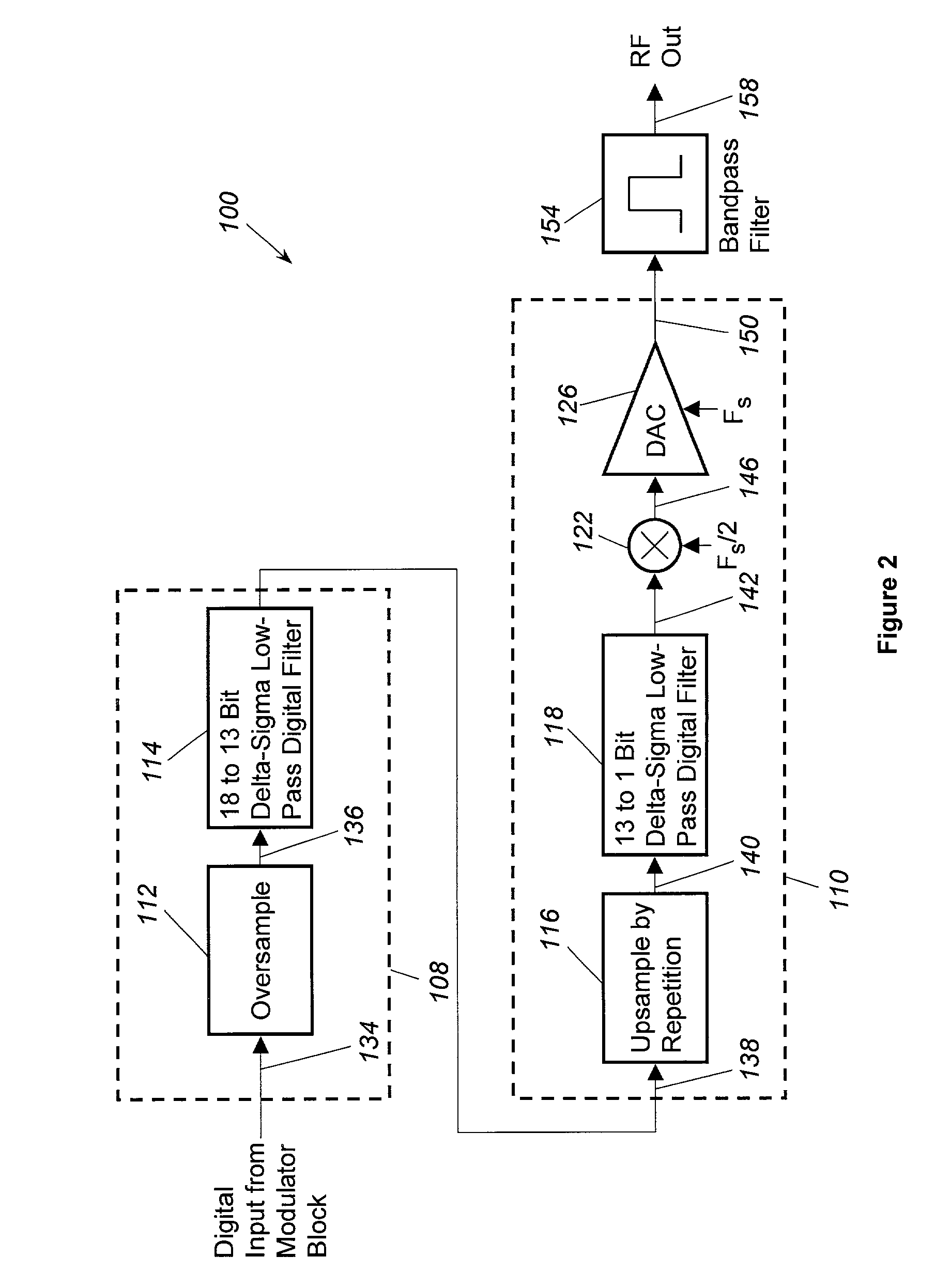Apparatus and methods for digital-to-analog conversion
a digital-to-analog and analog conversion technology, applied in the field of digital-to-analog conversion, can solve the problems of delta-sigma modulation, inability of transmitters to transmit multiple carriers simultaneously, and inability to achieve delta-sigma modulation commercial applications such as cellular networks, so as to reduce the word length of the input signal.
- Summary
- Abstract
- Description
- Claims
- Application Information
AI Technical Summary
Benefits of technology
Problems solved by technology
Method used
Image
Examples
Embodiment Construction
[0017]The following description of the preferred embodiments is merely exemplary in nature and is in no way intended to limit the invention, its application, or uses.
[0018]A preferred embodiment of a multiple-stage delta-sigma digital-to-analog conversion circuit is generally indicated in FIG. 1 by reference number 10. The conversion circuit or apparatus 10 includes an over-sampling circuit 12 that precedes a low-speed delta-sigma loop circuit 14. The loop circuit 14 is followed by an up-sampling circuit 16, a high-speed delta-sigma loop circuit 18, a high-speed tuning operator or circuit 22, and a one-bit digital-to-analog converter (DAC) 26. The terms “low-speed” and “high-speed” are used herein in a relative sense to refer to the frequencies of technologies respectively utilized in implementing embodiments of the invention. For example, the delta-sigma loop 14 in one embodiment is implemented using complementary metal-oxide semiconductor (CMOS) hardware, and the delta-sigma loop ...
PUM
 Login to View More
Login to View More Abstract
Description
Claims
Application Information
 Login to View More
Login to View More - R&D
- Intellectual Property
- Life Sciences
- Materials
- Tech Scout
- Unparalleled Data Quality
- Higher Quality Content
- 60% Fewer Hallucinations
Browse by: Latest US Patents, China's latest patents, Technical Efficacy Thesaurus, Application Domain, Technology Topic, Popular Technical Reports.
© 2025 PatSnap. All rights reserved.Legal|Privacy policy|Modern Slavery Act Transparency Statement|Sitemap|About US| Contact US: help@patsnap.com



